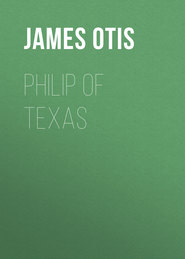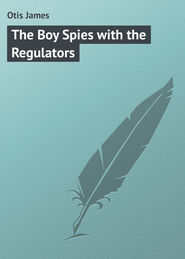По всем вопросам обращайтесь на: info@litportal.ru
(©) 2003-2025.
✖
The Boys of '98
Настройки чтения
Размер шрифта
Высота строк
Поля
The two vessels reached the scene of the landing on the afternoon of the fourth, and found the Spanish cavalry in waiting to welcome another attempted invasion.
The Wilmington promptly opened fire on a number of small houses marking the entrance to the place.
The gunboat fired four shots, which drove back the Spaniards, and Captain Dorst, with the ammunition, landed safely, the Leyden returning to Key West.
May 6. Orders were given from Washington to release the French mail steamer, Lafayette, and to send her to Havana under escort. The capture of the Frenchman by the gunboat Annapolis was an unfortunate incident, resulting from a mistake, but no protest was made by the representatives of the French government in the United States. It appeared that, before the Lafayette sailed for Havana, the French legation in Washington was instructed to communicate with the State Department. This was done and permission was granted to the steamer to enter and discharge her passengers and cargo, with the understanding that she would take on nothing there. Instructions for the fulfilment of such agreement were sent from Washington to Admiral Sampson’s squadron, and it was only learned after the capture was made that they were never delivered.
The War Department issued an order organising the regular and volunteer forces into seven army corps.
The following letter needs no explanation:
“597 Fifth Avenue, New York.
“Treasurer of the United States,
Washington, D. C.
“Dear Sir: – Some days ago I wrote President McKinley offering the government the sum of $100,000 for use in the present difficulty with Spain. He writes me that he has no official authority to receive moneys in behalf of the United States, and he suggests that my purpose can best be served by making a deposit with the assistant treasurer at New York to the credit of the treasurer of the United States, or by remitting my check direct to you at Washington. I, therefore, enclose my check for the above amount, drawn payable to your order on the Lincoln National Bank. Will you kindly acknowledge the receipt of the same?
“Very truly,
“Helen Miller Gould.
“May 6, 1898.”
It was replied to twenty-four hours later:
“Treasury Department of the United States.
“Office of the Treasury.
“Washington, D. C., May 7, 1898.
“Miss Helen Miller Gould,
597 Fifth Avenue, New York, N. Y.
“Madam: – It gives me especial pleasure to acknowledge the receipt of your letter under date of May 6, 1898, enclosing your check for $100,000, according to your previous offer to President McKinley, for the government. This sum has been placed in the general fund of the treasury of the United States as a donation from you, for use in the present difficulty with Spain. Permit me to recognise the superb patriotism which prompts you to make this magnificent gift to the government. Certificates of deposit will follow in due course. Respectfully yours,
“Ellis H. Roberts,
“Treasurer of the United States.”
May 6. The torpedo-boats Dupont and Hornet shelled the blockhouse near the lighthouse at Point Maya, at the mouth of the harbour of Matanzas, and Fort Garcia, which is an old hacienda used as a blockhouse, lying three and one-half miles to the east.
As the Dupont was leaving her position off the lighthouse point, a big shell was fired from the middle embrasure of a battery on the other side of the harbour, called Gorda. The line was perfect, but the elevation was bad, and the range too long. The shell fell a thousand yards short. The Hornet was ordered to use her 6-pounders on the blockhouse. The first shell failed of its purpose; but the second hit the target fairly, and the Spanish soldiers hurriedly left it for shelter among the neighbouring trees.
The Hornet fired twelve shells, six of which struck the mark. The Dupont, after ascertaining that Point Maya was being made too warm for Spanish occupation, steamed down to a blockhouse opposite, called Garcia Red, and a prominent landmark to the eastward, and turned loose her 1-pounders.
Here, as in the other place, the infantry had urgent business behind the forest woods and hills. After making certain they had gone to stay, the Dupont resumed patrol duty. Cavalry afterward appeared at Fortina, but remained there only long enough to see the torpedo-boat’s menacing attitude.
May 6. The cruiser Montgomery, Captain Converse, was the first ship of the American squadron to acquire the distinction of capturing two prizes in one day, which she did on the sixth. The captives were the Frasquito and the Lorenzo, both small vessels of no great value as compared with the big steamers taken during the first days of the war.
The Montgomery was cruising about fifty miles off Havana when the Frasquito, a two-master, came bowling along toward the Cuban capital. When the yellow flag of the enemy was sighted the helm was swung in her direction, and a blank shot was put across her bow. The Spaniard hove to and the customary prize-crew was put on board. It was found that the Frasquito was bound from Montevideo to Havana with a cargo of jerked beef. She was of about 140 tons register and hailed from Barcelona. The prize-crew took her to Havana waters, and the Annapolis assigned the cutter Hamilton to carry her into Key West.
A few minutes afterwards the Montgomery encountered the Lorenzo, a Spanish bark, bound from Barcelona to Havana with a cargo of dried beef. She was taken just as easily, and Ensign Osborn, with several “Jackies,” sailed her into port.
May 7. Quite a sharp little affair occurred off Havana, in which the Vicksburg and the cutter Morrill were very nearly enticed to destruction.
A small schooner was sent out from Havana harbour shortly before daylight to draw some of the Americans into an ambuscade.
She ran off to the eastward, hugging the shore with the wind on her starboard quarter. About three miles east of the entrance of the harbour she came over on the port tack.
A light haze fringed the horizon, and she was not discovered until three miles off shore, when the Mayflower made her out and signalled the Vicksburg and Morrill. Captain Smith of the Vicksburg immediately clapped on all steam and started in pursuit.
The schooner instantly put about and ran for Morro Castle before the wind. On doing so, she would, according to the plot, lead the two American war-ships directly under the guns of the Santa Clara batteries.
These works are a short mile west of Morro, and are a part of the defences of the harbour. There were two batteries, one at the shore, which had been recently thrown up, of sand and mortar, with wide embrasures for 8-inch guns, and the other on the crest of the rocky eminence which juts out into the waters of the gulf at the point. The upper battery mounted modern 10 and 12-inch Krupp guns, behind a six-foot stone parapet, in front of which were twenty feet of earthwork and belting of railroad iron.
The American vessels were about six miles from the schooner when the chase began. They steamed after her at full speed, the Morrill leading, until within a mile and a half of the Santa Clara batteries.
Commander Smith of the Vicksburg was the first to realise the danger into which the reckless pursuit had led them. He concluded it was time to haul off, and sent a shot across the bow of the schooner.
The Spanish skipper instantly brought his vessel about, but while she was still rolling in the trough of the sea with her sails flapping, an 8-inch shrapnel shell came hurtling through the air from the water-battery, a mile and a half away.
It passed over the Morrill, between the pilot-house and the smoke-stack, and exploded less than fifty feet away on the port quarter.
Two more shots followed in quick succession, both shrapnel. One burst close under the starboard quarter, filling the engine-room with the smoke of the exploding shell, and the other, like the first, passed over and exploded just beyond.
The Spanish gunners had the range, and their time fuses were accurately set.
The crews of both ships were at their guns. Lieutenant Craig, who was in charge of the bow 4-inch rapid-fire gun of the Morrill, asked for and obtained permission to return the fire.
At the first shot the Vicksburg, which was in the wake of the Morrill, slightly inshore, sheered off and passed to windward under the Morrill’s stern. In the meantime Captain Smith also put his helm to port, and was none too soon, for as the Morrill stood off a solid 8-inch shot grazed her starboard quarter and kicked up tons of water as it struck a wave one hundred yards beyond.
All the guns of the water-battery were now at work. One of them cut the Jacob’s-ladder of the Vicksburg adrift, and another carried away a portion of the rigging.
As the vessels steamed away their aft guns were used, but only a few shots were fired.
The Morrill’s 6-inch gun was elevated for four thousand yards, and struck the earthwork repeatedly. The Vicksburg discharged only three shots from her 6-pounder.
The Spaniards continued to fire shot and shell for twenty minutes, but none of the latter shots came within one hundred yards.
Later in the day the Morrill captured the Spanish schooner Espana, bound for Havana, and towed the prize to Key West.
The Newport added to the list of captures by bringing in the Spanish schooner Padre de Dios.
May 7. The United States despatch-boat McCulloch arrived at Hongkong from Manila, with details of Commodore Dewey’s victory.
Secretary Long, after the cablegram forwarded from Hongkong had been received, sent the following despatch:
“The President, in the name of the American people, thanks you and your officers and men for your splendid achievement and overwhelming victory. In recognition he has appointed you acting admiral, and will recommend a vote of thanks to you by Congress as a foundation for further promotion.”
The Wilmington promptly opened fire on a number of small houses marking the entrance to the place.
The gunboat fired four shots, which drove back the Spaniards, and Captain Dorst, with the ammunition, landed safely, the Leyden returning to Key West.
May 6. Orders were given from Washington to release the French mail steamer, Lafayette, and to send her to Havana under escort. The capture of the Frenchman by the gunboat Annapolis was an unfortunate incident, resulting from a mistake, but no protest was made by the representatives of the French government in the United States. It appeared that, before the Lafayette sailed for Havana, the French legation in Washington was instructed to communicate with the State Department. This was done and permission was granted to the steamer to enter and discharge her passengers and cargo, with the understanding that she would take on nothing there. Instructions for the fulfilment of such agreement were sent from Washington to Admiral Sampson’s squadron, and it was only learned after the capture was made that they were never delivered.
The War Department issued an order organising the regular and volunteer forces into seven army corps.
The following letter needs no explanation:
“597 Fifth Avenue, New York.
“Treasurer of the United States,
Washington, D. C.
“Dear Sir: – Some days ago I wrote President McKinley offering the government the sum of $100,000 for use in the present difficulty with Spain. He writes me that he has no official authority to receive moneys in behalf of the United States, and he suggests that my purpose can best be served by making a deposit with the assistant treasurer at New York to the credit of the treasurer of the United States, or by remitting my check direct to you at Washington. I, therefore, enclose my check for the above amount, drawn payable to your order on the Lincoln National Bank. Will you kindly acknowledge the receipt of the same?
“Very truly,
“Helen Miller Gould.
“May 6, 1898.”
It was replied to twenty-four hours later:
“Treasury Department of the United States.
“Office of the Treasury.
“Washington, D. C., May 7, 1898.
“Miss Helen Miller Gould,
597 Fifth Avenue, New York, N. Y.
“Madam: – It gives me especial pleasure to acknowledge the receipt of your letter under date of May 6, 1898, enclosing your check for $100,000, according to your previous offer to President McKinley, for the government. This sum has been placed in the general fund of the treasury of the United States as a donation from you, for use in the present difficulty with Spain. Permit me to recognise the superb patriotism which prompts you to make this magnificent gift to the government. Certificates of deposit will follow in due course. Respectfully yours,
“Ellis H. Roberts,
“Treasurer of the United States.”
May 6. The torpedo-boats Dupont and Hornet shelled the blockhouse near the lighthouse at Point Maya, at the mouth of the harbour of Matanzas, and Fort Garcia, which is an old hacienda used as a blockhouse, lying three and one-half miles to the east.
As the Dupont was leaving her position off the lighthouse point, a big shell was fired from the middle embrasure of a battery on the other side of the harbour, called Gorda. The line was perfect, but the elevation was bad, and the range too long. The shell fell a thousand yards short. The Hornet was ordered to use her 6-pounders on the blockhouse. The first shell failed of its purpose; but the second hit the target fairly, and the Spanish soldiers hurriedly left it for shelter among the neighbouring trees.
The Hornet fired twelve shells, six of which struck the mark. The Dupont, after ascertaining that Point Maya was being made too warm for Spanish occupation, steamed down to a blockhouse opposite, called Garcia Red, and a prominent landmark to the eastward, and turned loose her 1-pounders.
Here, as in the other place, the infantry had urgent business behind the forest woods and hills. After making certain they had gone to stay, the Dupont resumed patrol duty. Cavalry afterward appeared at Fortina, but remained there only long enough to see the torpedo-boat’s menacing attitude.
May 6. The cruiser Montgomery, Captain Converse, was the first ship of the American squadron to acquire the distinction of capturing two prizes in one day, which she did on the sixth. The captives were the Frasquito and the Lorenzo, both small vessels of no great value as compared with the big steamers taken during the first days of the war.
The Montgomery was cruising about fifty miles off Havana when the Frasquito, a two-master, came bowling along toward the Cuban capital. When the yellow flag of the enemy was sighted the helm was swung in her direction, and a blank shot was put across her bow. The Spaniard hove to and the customary prize-crew was put on board. It was found that the Frasquito was bound from Montevideo to Havana with a cargo of jerked beef. She was of about 140 tons register and hailed from Barcelona. The prize-crew took her to Havana waters, and the Annapolis assigned the cutter Hamilton to carry her into Key West.
A few minutes afterwards the Montgomery encountered the Lorenzo, a Spanish bark, bound from Barcelona to Havana with a cargo of dried beef. She was taken just as easily, and Ensign Osborn, with several “Jackies,” sailed her into port.
May 7. Quite a sharp little affair occurred off Havana, in which the Vicksburg and the cutter Morrill were very nearly enticed to destruction.
A small schooner was sent out from Havana harbour shortly before daylight to draw some of the Americans into an ambuscade.
She ran off to the eastward, hugging the shore with the wind on her starboard quarter. About three miles east of the entrance of the harbour she came over on the port tack.
A light haze fringed the horizon, and she was not discovered until three miles off shore, when the Mayflower made her out and signalled the Vicksburg and Morrill. Captain Smith of the Vicksburg immediately clapped on all steam and started in pursuit.
The schooner instantly put about and ran for Morro Castle before the wind. On doing so, she would, according to the plot, lead the two American war-ships directly under the guns of the Santa Clara batteries.
These works are a short mile west of Morro, and are a part of the defences of the harbour. There were two batteries, one at the shore, which had been recently thrown up, of sand and mortar, with wide embrasures for 8-inch guns, and the other on the crest of the rocky eminence which juts out into the waters of the gulf at the point. The upper battery mounted modern 10 and 12-inch Krupp guns, behind a six-foot stone parapet, in front of which were twenty feet of earthwork and belting of railroad iron.
The American vessels were about six miles from the schooner when the chase began. They steamed after her at full speed, the Morrill leading, until within a mile and a half of the Santa Clara batteries.
Commander Smith of the Vicksburg was the first to realise the danger into which the reckless pursuit had led them. He concluded it was time to haul off, and sent a shot across the bow of the schooner.
The Spanish skipper instantly brought his vessel about, but while she was still rolling in the trough of the sea with her sails flapping, an 8-inch shrapnel shell came hurtling through the air from the water-battery, a mile and a half away.
It passed over the Morrill, between the pilot-house and the smoke-stack, and exploded less than fifty feet away on the port quarter.
Two more shots followed in quick succession, both shrapnel. One burst close under the starboard quarter, filling the engine-room with the smoke of the exploding shell, and the other, like the first, passed over and exploded just beyond.
The Spanish gunners had the range, and their time fuses were accurately set.
The crews of both ships were at their guns. Lieutenant Craig, who was in charge of the bow 4-inch rapid-fire gun of the Morrill, asked for and obtained permission to return the fire.
At the first shot the Vicksburg, which was in the wake of the Morrill, slightly inshore, sheered off and passed to windward under the Morrill’s stern. In the meantime Captain Smith also put his helm to port, and was none too soon, for as the Morrill stood off a solid 8-inch shot grazed her starboard quarter and kicked up tons of water as it struck a wave one hundred yards beyond.
All the guns of the water-battery were now at work. One of them cut the Jacob’s-ladder of the Vicksburg adrift, and another carried away a portion of the rigging.
As the vessels steamed away their aft guns were used, but only a few shots were fired.
The Morrill’s 6-inch gun was elevated for four thousand yards, and struck the earthwork repeatedly. The Vicksburg discharged only three shots from her 6-pounder.
The Spaniards continued to fire shot and shell for twenty minutes, but none of the latter shots came within one hundred yards.
Later in the day the Morrill captured the Spanish schooner Espana, bound for Havana, and towed the prize to Key West.
The Newport added to the list of captures by bringing in the Spanish schooner Padre de Dios.
May 7. The United States despatch-boat McCulloch arrived at Hongkong from Manila, with details of Commodore Dewey’s victory.
Secretary Long, after the cablegram forwarded from Hongkong had been received, sent the following despatch:
“The President, in the name of the American people, thanks you and your officers and men for your splendid achievement and overwhelming victory. In recognition he has appointed you acting admiral, and will recommend a vote of thanks to you by Congress as a foundation for further promotion.”











